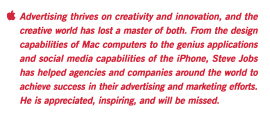Judging from the thousands of publications, websites, speakers and consulting practices focused on change and transition management, many companies have trouble changing. Many times, when a company announces they are “changing” its brand, its trouble centers around an understanding of what it is even trying to change.
Think of a brand as a personification of a product, service or company. A brand has a name, a look and internal beliefs. And these create a reputation, as well as expectations of future behavior, built from an individual’s experiences with a brand.
 Often, when companies examine their brands, they begin acting like teenagers, focusing only on how they look. A brand’s visual identity is a means to attract attention and quickly convey a brand’s personality, as well as connect the market to advertising messages and remind current customers of previous experiences with the brand, so looks are important. Like a friend with a new hairstyle, a new brand look can convey a lot, especially if the brand cares enough to look good or is “up with the times.” A new look can also signal a change in the brand. Just like a co-worker who loses 80 pounds, buys a new wardrobe and is now a fitness fanatic, a new brand identity can convey a change in expected behaviors. Looks matter a lot, especially to initially attract a consumer, or for when a brand changes, but a new look does not create a new brand.
Often, when companies examine their brands, they begin acting like teenagers, focusing only on how they look. A brand’s visual identity is a means to attract attention and quickly convey a brand’s personality, as well as connect the market to advertising messages and remind current customers of previous experiences with the brand, so looks are important. Like a friend with a new hairstyle, a new brand look can convey a lot, especially if the brand cares enough to look good or is “up with the times.” A new look can also signal a change in the brand. Just like a co-worker who loses 80 pounds, buys a new wardrobe and is now a fitness fanatic, a new brand identity can convey a change in expected behaviors. Looks matter a lot, especially to initially attract a consumer, or for when a brand changes, but a new look does not create a new brand.
Like a relationship between two people, a customer getting to know the brand is what drives a long-term relationship. In getting to know that brand, the consumer values it based on both utility and the brand’s personality. For example, ponder purchasing a new iPod at an Apple Store or Best Buy, grabbing a cup of coffee at Starbucks or a 7-11, or driving to work in your Buick or BMW. All offer similar utility, but under very distinct personalities.
So where does a brand’s personality come from? It comes from every interaction within the marketplace – what it says and what it does. From chosen sales channels, pricing and promotional strategies, product or service quality, and marketing messaging to customer service response, problem resolution, and how the brand speaks and reacts in social media – all of these things reflect the brand’s personality.
And who is making the decisions on how a brand portrays itself and interacts with customers? The answer is people. Based on the size of the company, a brand might have one, 100 or 100,000 employees delivering the brand’s personality every day. Whether a company has stringent hiring standards that are based on the brand personality they desire to portray, or simply a prevailing culture that weeds out employees who don’t “fit,” employees deliver a brand’s personality.
Too often, brands communicate to the marketplace what they want to be without considering what they already are. If the people delivering the brand’s personality on a day-to-day basis either don’t understand, or cannot deliver changes that move the brand’s reputation, customers will see the disconnect very quickly. What a brand says and what a brand does needs to evolve together.
TIPS for your Brand
- An easy way to think of your brand is to think of it as a person with a name, look, beliefs and personality.
- Make sure your brand’s look is current and portrays your brand appropriately, but understand that simply changing your look does not change the brand.
- A brand’s personality creates expectations in the marketplace. This personality is driven by the people and culture behind the brand.
- Understand your customers’ perceptions of this personality before you announce changes to the marketplace.
- Don’t make promises your people can’t keep. Evolve your brand based on adjusting your operations and, possibly, even the type of people you hire.



